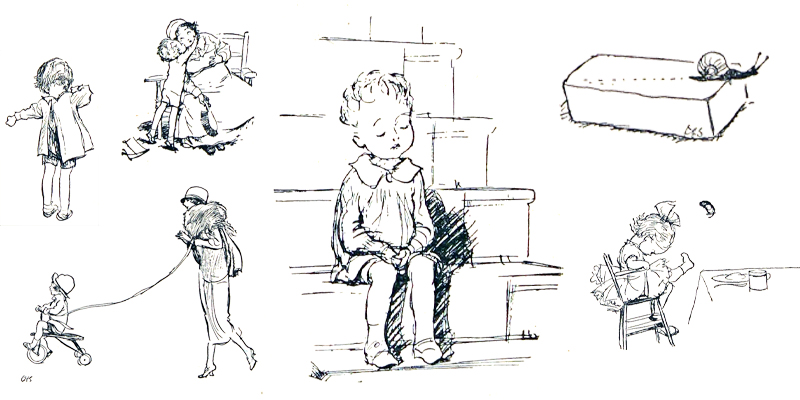May 8, 2025, 9:27am
Illustrations by E. H. Shepard
I’ve been lucky to always be around readers. I had some very good and kind teachers who recommended great books, and I had friends who got to The Lord of The Rings before me, but most of my love of reading came from my family. We were regulars at the library and at bookstores, and spending time with books was a routine we shared.
The other day, in anticipation of Mother’s Day, I asked my mom which books she remembered the two of us reading when I was young. There were a lot, and to jog our memory she sent me a picture of the shelf of kids books at home. A lot of them are old hardcovers, given to my mom by her mom. There are a lot of classics, some that I remember loving, and others I remember passing by—I’ve still never read Charlotte’s Web, which I found out on this phone call was because the ending made my mom too sad.
We read a lot of Beatrix Potter, and Dr. Dolittle too. My mom loved thinking about the inner lives of animals: she shared this with me, I was soon reading Redwall and other animal books, and getting to know all the creatures in our yard. There were spider webs I knew to avoid on my way to the bus stop, and trees I knew to look for birds in.
In the photo, there’s also a row of Borrowers books by Mary Norton, and those started my fascination with anything miniature. Whenever we’d walk in our neighborhood, my mom would point out hollows in trees or little shelters under rocks, and I would gather twigs and leaves to furnish them, in case any borrowers happened by.
As I got older, my reading started to take its own path, but me and my mom’s book club of two kept up. She promised that I’d like Little Women at some point, even if the assigned reading was tough to get through at 13. She was right. I also read Catcher in the Rye for school, and my teacher had mentioned Salinger’s short stories. I found a copy of Nine Stories on a shelf, and my mom’s name was there in the front cover.
But the one book that we both immediately remembered and that we still talk about frequently, is A.A. Milne’s When We Were Very Young. The book is Milne’s first book for kids, before Winnie the Pooh, and collects a few dozen inventive poems. They’re a bit more proper than other stuff I was reading: Milne’s 1920s, British English was different enough to fascinate me like a foreign language might.
But the poems are also very, very fun, with catchy rhymes and a lot of silliness. I still go back to them, and I can see the appeal for my mom, or any parent. The language is well crafted, and doesn’t default to cloying moral instruction. Milne takes the imagination of children seriously, and is attentive to the small moments which are striking to an adult and nearly magical to a kid: “Halfway Down,” a poem about the strange nowhere of the middle stair, is something I still think about.
There’s a wonderful illustration for this poem too, of a child sitting serenely on a staircase. All of Milne’s work has wonderful illustrations by E. H. Shepard, and my mom saw my fascination with them. She’s always been a wonderful artist, and dug out her college pen and ink drawing set for me. I scratched out doodles, trying to copy from my books and a college architectural drawing manual, but I was frustrated that I couldn’t immediately nail the precision of Pauline Baynes or the loose whimsy of Quentin Blake .
When We Were Very Young also has a lot of “James” in it, which I remember making a big deal of—kids all seem to be a little vain. There’s a dormouse who goes by Terrible James and “The Four Friends” features James the very small snail, who snails around with his animal pals for a few stanzas: “James gave the huffle of a snail in danger/And nobody heard him at all.”
And then there’s James James Morrison Morrison Weatherby George Dupree (these poems are very British), the star of “Disobedience” who takes great care of his mother, though he’s only three. What I remember most about this poem is how fun it was to read. The poem has a galloping rhythm, with capitalized lines and stage directions that conduct its own reading. Some sections are shouted and some are whispered, which is very fun for a kid, especially when your mom plays along with you.
Most of all, this is how I remember reading any book with my mom: it was always fun. My mom has a knack for finding moments like this, magic circles where me, my sister, and now my niece and nephew, can play and imagine. Milne wrote space to be silly and big into the poem, to shout and whisper and pretend to be British, but it was my mom who made the space for the poem in my life, and brought the silliness and the joy to us.
